| |
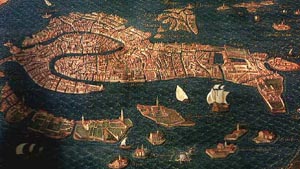 |
Venice in the 16th century
If the city was losing its central role politically, demographically
it was continually expanding. With over 175,000 inhabitants it was
one of the most densely-populated cities in the world.
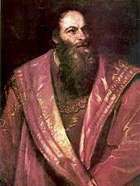 |
It was a European capital that hosted
painters, sculptors, architects and literary personalities such
as Titian, Tintoretto, Veronese, the Bassanos, Palladio, Sansovino,
Pietro Aretino, and Galileo Galilei.
This cultural vivacity was made possible by a freedom which allowed
many persecuted foreign intellectuals to find a second home in the
Serenissima.
|
| |
This was all before the terrible plague epidemic that
later engulfed the city. |
|
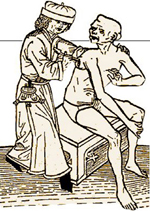 The plague breaks out
The plague breaks out
In the three years between 1575 and 1577 the Serenissima was tormented
by the plague: aided by the high density of the population, the disease
spread through the city, causing terrible losses, with a dramatic
new outbreak in the summer of the second year.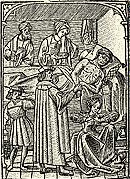
Almost 50,000 died, which was more than a third of the city’s
inhabitants.
Due mainly to promiscuity and precarious living conditions, the disease
spread almost exclusively among the poorer classes. |
| Initially the seriousness of the epidemic was played
down, but as the disease spread the government was forced to adopt
extreme hygiene and sanitary regulations which helped to eradicate
the disease after the first dramatic months. |
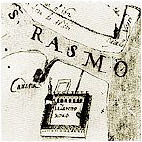 |
|
Doctors and pizzicamorti
During the plague, the two figures primarily concerned with the disease
could be found wandering the city streets: the doctor and the pizzicamorti. |
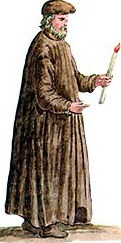
The doctor was greatly at risk of infection and had to take many precautions:
he was covered by a black cloak, probably made from a waxed fabric,
and well perfumed with juniper berries. He wore gloves and had a mask
that covered his face and hair, with its characteristic hooked nose
containing aromatic antidotes. |
|
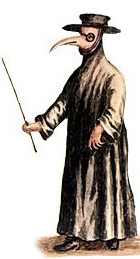 |
| |
The pizzicamorti was the gravedigger, who was also protected
by a tarred cloak and who usually wore gloves. He had the unpleasant
task of transporting the plague-ridden bodies and burning them. |
| |
|


 The plague breaks out
The plague breaks out 


